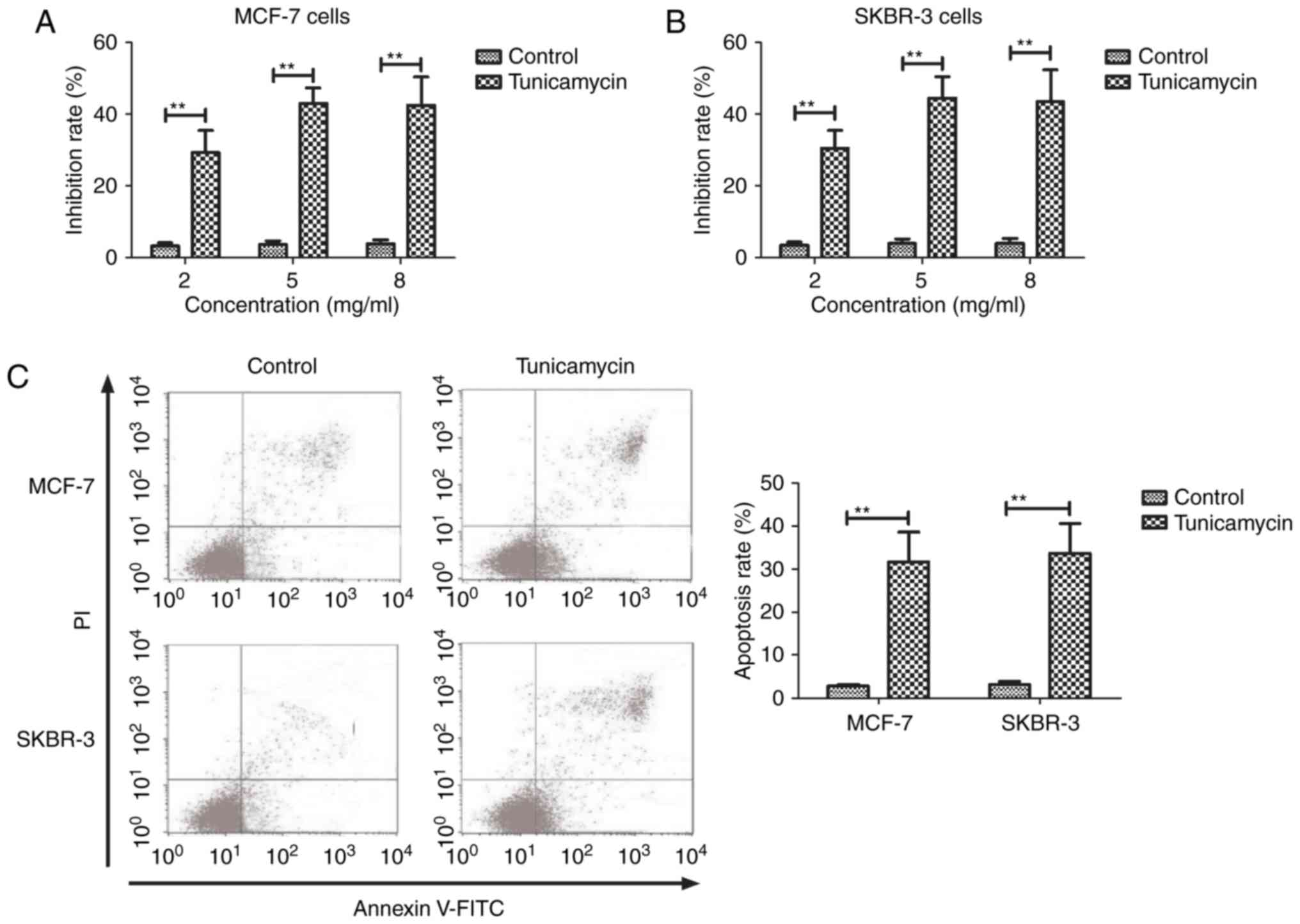|
1
|
Benson R, Madan R, Julka PK and Rath GK:
Metaplastic carcinoma of breast: A case series of seven patients
from a tertiary care center and review of literature. Gulf J
Oncolog. 1:74–76. 2016.PubMed/NCBI
|
|
2
|
Conlon N, Sadri N, Corben AD and Tan LK:
Acinic cell carcinoma of breast: Morphologic and
immunohistochemical review of a rare breast cancer subtype. Hum
Pathol. 51:16–24. 2016. View Article : Google Scholar : PubMed/NCBI
|
|
3
|
Conlon N, Howard J, Catalano J, Gallagher
M, Tan LK and Corben AD: Breast carcinoma in young women: No
evidence of increasing rates of metastatic breast carcinoma in a
single tertiary center review. Breast J. 22:287–292. 2016.
View Article : Google Scholar : PubMed/NCBI
|
|
4
|
Wang L, Shi JF, Huang HY, Zhu J, Li J,
Fang Y and Dai M: Economic evaluation on breast cancer screening in
mainland China: A systematic review. Zhonghua Liu Xing Bing Xue Za
Zhi. 37:1662–1669. 2016.(In Chinese). PubMed/NCBI
|
|
5
|
Banys-Paluchowski M, Krawczyk N and Fehm
T: Potential role of circulating tumor cell detection and
monitoring in breast cancer: A review of current evidence. Front
Oncol. 6:2552016. View Article : Google Scholar : PubMed/NCBI
|
|
6
|
Wei JL, Buza J III and Liu CJ: Does
progranulin account for the opposite effects of etanercept and
infliximab/adalimumab in osteoarthritis?: Comment on Olson et al:
‘Therapeutic opportunities to prevent post-traumatic arthritis:
Lessons from the natural history of arthritis after articular
fracture’. J Orthop Res. 34:12–14. 2016. View Article : Google Scholar : PubMed/NCBI
|
|
7
|
Jiang CC, Chen LH, Gillespie S, Kiejda KA,
Mhaidat N, Wang YF, Thorne R, Zhang XD and Hersey P: Tunicamycin
sensitizes human melanoma cells to tumor necrosis factor-related
apoptosis-inducing ligand-induced apoptosis by up-regulation of
TRAIL-R2 via the unfolded protein response. Cancer Res.
67:5880–5888. 2007. View Article : Google Scholar : PubMed/NCBI
|
|
8
|
Shiraishi T, Yoshida T, Nakata S, Horinaka
M, Wakada M, Mizutani Y, Miki T and Sakai T: Tunicamycin enhances
tumor necrosis factor-related apoptosis-inducing ligand-induced
apoptosis in human prostate cancer cells. Cancer Res. 65:6364–6370.
2005. View Article : Google Scholar : PubMed/NCBI
|
|
9
|
Delom F, Emadali A, Cocolakis E, Lebrun
JJ, Nantel A and Chevet E: Calnexin-dependent regulation of
tunicamycin-induced apoptosis in breast carcinoma MCF-7 cells. Cell
Death Differ. 14:586–596. 2007. View Article : Google Scholar : PubMed/NCBI
|
|
10
|
Takahashi N, Iwahori A, Breitman TR and
Fukui T: Tunicamycin in combination with retinoic acid
synergistically inhibits cell growth while decreasing
palmitoylation and enhancing retinoylation of proteins in the human
breast cancer cell line MCF-7. Oncol Res. 9:527–533.
1997.PubMed/NCBI
|
|
11
|
Hasegawa A, Osuga Y, Hirota Y, Hamasaki K,
Kodama A, Harada M, Tajima T, Takemura Y, Hirata T, Yoshino O, et
al: Tunicamycin enhances the apoptosis induced by tumor necrosis
factor-related apoptosis-inducing ligand in endometriotic stromal
cells. Hum Reprod. 24:408–414. 2009. View Article : Google Scholar : PubMed/NCBI
|
|
12
|
Banerjee A, Lang JY, Hung MC, Sengupta K,
Banerjee SK, Baksi K and Banerjee DK: Unfolded protein response is
required in nu/nu mice microvasculature for treating breast tumor
with tunicamycin. J Biol Chem. 286:29127–29138. 2011. View Article : Google Scholar : PubMed/NCBI
|
|
13
|
Giordano E, Davalos A, Nicod N and Visioli
F: Hydroxytyrosol attenuates tunicamycin-induced endoplasmic
reticulum stress in human hepatocarcinoma cells. Mol Nutr Food Res.
58:954–962. 2014. View Article : Google Scholar : PubMed/NCBI
|
|
14
|
Carlisle RE, Brimble E, Werner KE, Cruz
GL, Ask K, Ingram AJ and Dickhout JG: 4-Phenylbutyrate inhibits
tunicamycin-induced acute kidney injury via CHOP/GADD153
repression. PLoS One. 9:e846632014. View Article : Google Scholar : PubMed/NCBI
|
|
15
|
Davey G and Wu Z: Attitudes in China
toward the use of animals in laboratory research. Altern Lab Anim.
35:313–316. 2007.PubMed/NCBI
|
|
16
|
Bai FL, Yu YH, Tian H, Ren GP, Wang H,
Zhou B, Han XH, Yu QZ and Li DS: Genetically engineered Newcastle
disease virus expressing interleukin-2 and TNF-related
apoptosis-inducing ligand for cancer therapy. Cancer Biol Ther.
15:1226–1238. 2014. View Article : Google Scholar : PubMed/NCBI
|
|
17
|
Li L, Yuan L, Chen X, Wang Q, Tian J, Yang
K and Zhou E: Current treatments for breast cancer-related
lymphoedema: A systematic review. Asian Pac J Cancer Prev.
17:4875–4883. 2016.PubMed/NCBI
|
|
18
|
Han X, Zhang X, Li H, Huang S, Zhang S,
Wang F and Shi Y: Tunicamycin enhances the antitumor activity of
trastuzumab on breast cancer in vitro and in vivo. Oncotarget.
6:38912–38925. 2015. View Article : Google Scholar : PubMed/NCBI
|
|
19
|
Zhang Y, Liao S, Fan W, Wei W, Wang C and
Sun S: Tunicamycin-induced ER stress regulates chemokine CCL5
expression and secretion via STAT3 followed by decreased
transmigration of MCF-7 breast cancer cells. Oncol Rep.
32:2769–2776. 2014. View Article : Google Scholar : PubMed/NCBI
|
|
20
|
Kim SH, Shin HY, Kim YS, Kang JG, Kim CS,
Ihm SH, Choi MG, Yoo HJ and Lee SJ: Tunicamycin induces paraptosis
potentiated by inhibition of BRAFV600E in FRO anaplastic thyroid
carcinoma cells. Anticancer Res. 34:4857–4868. 2014.PubMed/NCBI
|
|
21
|
Nami B, Donmez H and Kocak N:
Tunicamycin-induced endoplasmic reticulum stress reduces in vitro
subpopulation and invasion of CD44+/CD24-phenotype breast cancer
stem cells. Exp Toxicol Pathol. 68:419–426. 2016. View Article : Google Scholar : PubMed/NCBI
|
|
22
|
Andreeva VA, Unger JB and Pentz MA: Breast
cancer among immigrants: A systematic review and new research
directions. J Immigr Minor Health. 9:307–322. 2007. View Article : Google Scholar : PubMed/NCBI
|













